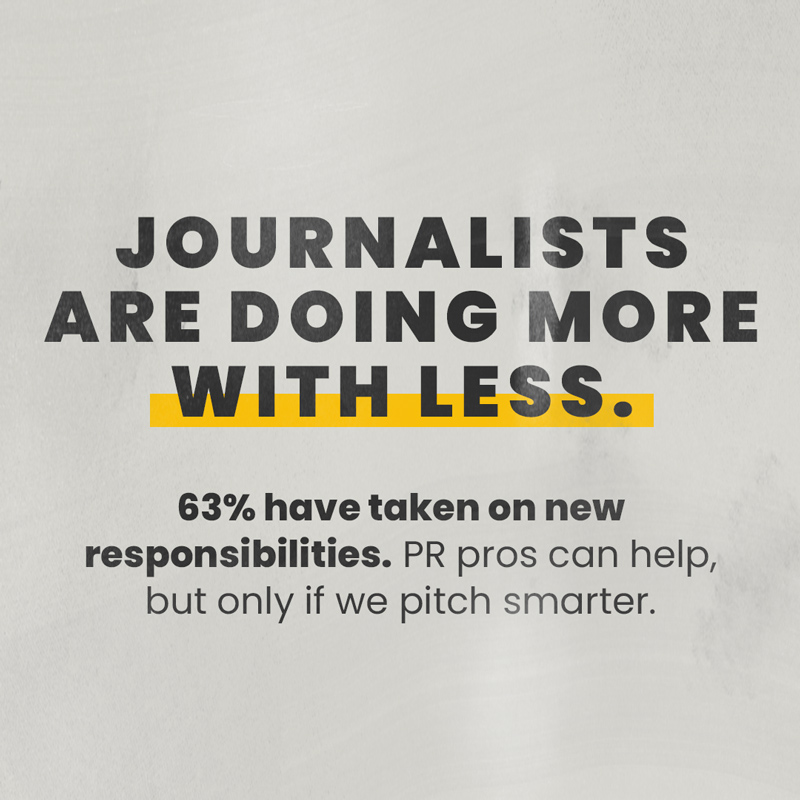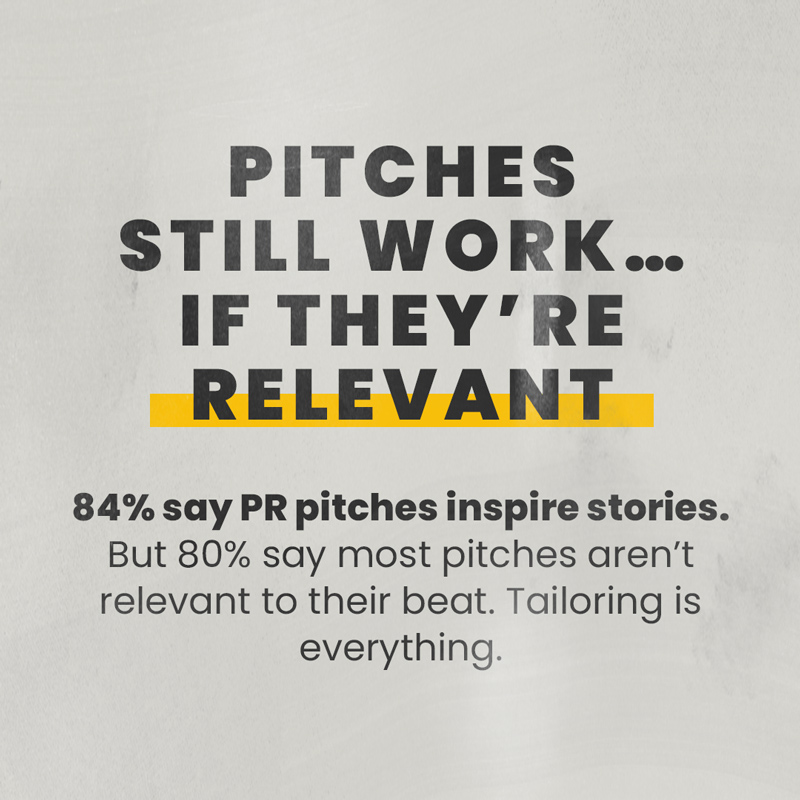What do Journalists Want From PR Pros?
Muck Rack recently released their Annual State of Journalism report – highlighting insights from 1500+ journalists, in various roles and mediums at different news organizations, across the globe. These insights help us to understand how reporters, editors and media outlets are evolving in order to better support our clients in achieving their goals.
Here are our team’s takeaways:
Journalists are cautiously optimistic about the industry and future – and AI is a part of it.
While journalists report being concerned by disinformation and misinformation (36%), public trust in journalism (28%) and lack of funding (28%), 54% are at least somewhat confident they’ll be able to have a long-term career in journalism.
While AI was reported as concerning by 18%, 77% said they used AI tools in the past year with ChatGPT being the most commonly used (42%). Others included transcription services (40%), Grammarly (35%) and Gemini (13%).
As 63% of those surveyed reported taking on new responsibilities as part of their job in the past 12 months, it’s not surprising that they are relying on these tools to do more with less.

Social media is becoming less important to producing journalism work than in the past – creating more opportunity for pitches.
Last year, 33% of journalists reported that social media was very important in producing their work, both in finding sources and story inspiration. Now, that number has gone down to 23%. This creates opportunity for public relations, in the form of strong pitches and interview sources, to fill the growing gaps.
For those who still rely on social media, significant shifts have occurred in outlet preferences and usage. While X previously held the title of most valuable platform, it has fallen to second place behind Facebook after dropping 15% in the last year alone. Further, 72% now consider the platform untrustworthy.
On the other hand, 60% report they trust LinkedIn to treat their content fairly. 49% reported using the platform more frequently in the past year as well. For companies who are seeking to increase their media presence and thought leadership efforts, being part of your industry’s conversations on LinkedIn is more important now than ever.
Pitches are still making an impact on what is getting covered by journalists.
92% of journalists have at least some say in what stories they work on – meaning the right email in the right inbox could lead to coverage if the journalist is receptive to pitches, and most are!
While 54% of journalists seldom or never respond to pitches, 84% of journalists say at least some of their stories were inspired by PR professionals. However, 80% report, more often than not, that pitches they receive are not relevant to their beat.

These pitches, as well as those that are viewed as overly promotional or part of a mass email, are often immediately deleted without a second thought.
How you pitch matters.
Only half of journalists view PR relationships as important to their success – likely due to the fact that they receive frequent pitches with little relevancy to their beat.
As most journalists are receiving more than five pitches each day, the best way to ensure reporters see value is by increasing relevancy, as 69% say clear tailoring is what makes a pitch worth their time.
Other things reporters are looking for? 62% want interview access with relevant sources, and 42% want to see original data or research. Surprisingly, only 9% report referencing their previous work as useful.
Unsurprisingly, reporters prefer to be pitched via a brief 200-word email. Most have no preference for day of the week, but they do prefer to receive pitches before noon. For follow ups, they prefer these be limited to one and ask that it be sent no earlier than three days after the initial outreach.
The bottom line?
Some journalists do appreciate the hard work of PR professionals, but it’s important that our work be done right as journalists take on more responsibilities and distrust in social media platforms continues to grow.
What does this mean for future pitching? Take time upfront to find the best contact instead of building out a large media list. As you draft your pitches, rather than referencing a journalist’s previous work, quickly state why your story is aligned with their beat in your opening sentence AND your email subject to avoid automatic deletion. Whenever possible, be prepared and offer sources and interview opportunities! Lastly, once you’ve pressed send, give them time to respond and limit your follow ups. If they don’t respond, they’re likely not interested.

By better understanding the needs of journalists, we are able to better serve our clients. We’re excited to put these findings into practice!






